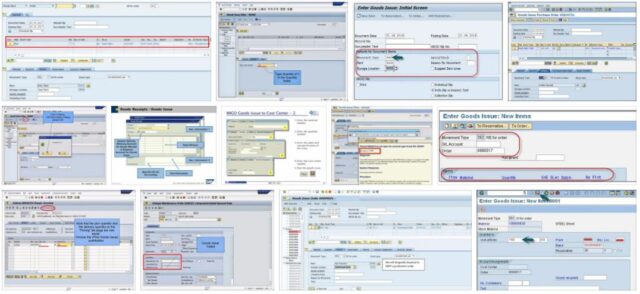A goods issue can be recorded in manufacturing companies and in trading companies. The goods are sent to customers, delivered or picked up by the customers themselves. The outgoing goods must be recorded, invoices and delivery notes must be written for the outgoing goods.
Goods issue as an area process
According to Electronicsencyclopedia, goods issue is part of the marketing process and includes the delivery of goods to customers who order goods. In industrial companies and sometimes also in craft businesses, the products are manufactured according to customer orders and made available for delivery. The goods for dispatch are stored in the distribution warehouse, so that the goods issue proceeds smoothly, plans must be drawn up in the distribution warehouse. In most cases, the delivery instructions must be observed when accepting the order. This includes
- packaging
- loading
- delivery.
The packaging must comply with the statutory provisions, packaging units, maximum weights and packaging sizes must be observed. If the goods are sent abroad, special regulations apply to packaging. This is especially the case when the goods are delivered by plane, ship or train. The regulations of the customs are to be observed, as the goods have to be cleared. Loading refers to the type of shipment, for example the goods must be loaded onto trucks, airplanes or railway wagons. The delivery must be planned taking into account the capacity utilization of the means of transport and the date requested by the customer.
Outgoing goods – an important area in logistics
Outgoing goods are an important area of logistics. Regardless of how the goods are delivered, packages of a shipment always have to be processed and loaded. It is important to distribute the picking over several storage areas if different goods are to be delivered to a customer. In such cases, all parts of a shipment must be merged. This can be done in the outgoing goods department by collecting the packages on staging areas, which are grouped according to postcodes and target relations. With the invoice program you can easily keep track of your inventory. Thanks to the intelligent warehouse management you save valuable time searching for articles and you also have an overview of all articles including purchase and sales prices.
Important documents for the goods issue
In addition to the picking of the goods, the preparation of the accompanying and shipping documents is important. The most important accompanying document for the goods is the delivery note, it contains information about the type of goods, their number and description as well as the quantities of the respective goods that are in a shipment. The customer receives a delivery note, a copy of the delivery note remains with the company. The invoice is created on the basis of the delivery note. It can be sent with the goods, but in most cases it will be sent by separate mail. In some cases, the invoice can also serve as a delivery note. The packages are provided with address stickers. How the address labels are filled out depends on whether the goods are being sent within Germany or abroad. If the goods are sent abroad, special labeling of the consignments is often required. Furthermore, loading lists must be drawn up when the goods are sent with the forwarding agent. If the goods are sent by train, ship or plane, Waybills must be created. Customs declarations are required for deliveries of goods abroad. The goods issue must be traceable, so receipts are created for the delivery of the goods to the shipping company. If the customer does not receive the goods or does not receive them on time, it must be possible to investigate the delivery and accompanying documents. In accounting, the goods issues are recorded in the land register and provided with delivery notes. In most cases, a special goods issue ledger is kept for this purpose. Postings of the goods issue are used in logistics to measure, control and, if necessary, shorten throughput times.
When the customer receives the goods
Once the customer has received the goods, he must check them for completeness and for damage. He inspects the goods and has to complain about defective goods. The customer checks the goods for completeness on the basis of the delivery note. If the goods were not completely delivered, the customer must contact the supplier in order to receive a subsequent delivery or a reduction in the invoice. Now it can happen that the customer receives goods that he did not order, or that he receives too much of one of the goods. He must inform the supplier of this and can send back the goods that he does not need.
